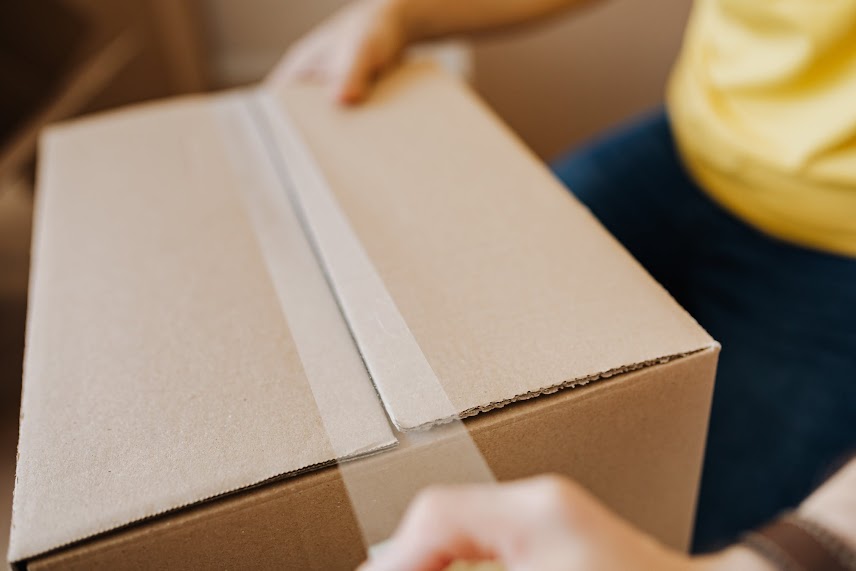14 Tips to Prepare for Long Distance Moving
Undertaking a new home-moving operation is incredibly daunting. From the day you decide to call some other coordinates on the Earth your home, to the day the delivery happens, the process requires exceptional concentration. Although, every move requires planning and organization. But with long distance moving, things take a meticulous turn.
With a short distance, you can travel back with some expense to get your unintentionally left belongings. However, in the case of long distances, traveling back and forth is not an option. Therefore, most Americans (about 80%) prefer hiring a moving company to prevent unnecessary hassles. [1] We have compiled a worthwhile list of long distance moving tips to help you perform the most effective move!

1. Create a Timeline
A timeline may not seem manageable, but it will help you schedule your tasks without draining your energy. As soon as you decide to move or the paperwork for your new home is about to complete, start working on your timeline.
Set a date for the move and work your way backward to a convenient date to start getting things done. Some of the essential tasks to include in your timeline are: decluttering your home, purchasing or collecting packing supplies, donating or trading items, and notifying utility companies about your move. If the time is insufficient to create a detailed timeline, you can hire professional help.
2. Declutter Your Home
Decluttering your home minimizes the overall workload as you don’t have to worry about adjusting every trinket for long-distance moving. You can donate, sell or trade unwanted items for helpful stuff like packing supplies and other things you think you’ll not need.
Note that throwing away useless stuff is not ideal as it creates issues like pollution and landfills. According to research, about 82.2 million tons of packing waste are created annually. [2] Hence, consider opting for an eco-friendly method so the environment stays happy while you move.

3. Hire A Reputable Moving Company
Hiring a reputable moving company can be a practical solution when it comes to long-distance moving, particularly for large households. While DIY moving is gaining popularity, it may not be the best option for everyone. Fortunately, there are numerous moving companies available in the USA, making it easy to find a suitable one.
Before hiring a moving company, it’s crucial to conduct thorough research. Read reviews and ask for references on public platforms to ensure a trustworthy and professional service, minimizing the risk of property theft during the move.
4. Label Everything
The next thing is to label everything. Randomly throwing your stuff into cardboard boxes is not helpful. Pack your items in different containers and label them so nobody shatters your precious items when staking the boxes.
You can also go into detail with the labeling. Although it will take longer, however, it will ease unpacking, especially if you need professionals to help you.
5. Take Inventory
Before you start packing, take inventory of all of your belongings. Then, cross items off the list as you progress from room to room. This way, you can track everything, and the chances of things going missing during the long distance moving will reduce significantly.
6. Pack Strategically
Strategic packing is critical for a long move. Pack smaller items in larger boxes to utilize the space effectively. Similarly, pack heavier things into smaller containers so you can easily carry them, and the possibility of damage becomes less.
You can also pack hangers in the left space to strengthen the boxes. It will prevent the boxes from squeezing, and you won’t need additional cardboard boxes for packing hangers.
7. Keep Important Documents with You
Misplacing a bunch of papers is perfectly normal when you are moving. Therefore, you must take special care and secure essential documents before packing your things.
Keep documents like passports, birth certificates, and insurance papers in a secure and separate file. Moreover, if you have other valuables which may be prone to theft or damage, keeping them with you is a good idea.
8. Change Your Address Before A Long Distance Moving
Long distance moving is about something other than packing things from your old home and unpacking them in your new one. There are other things at play as well. Another important thing you should take care of is updating your address with the post office, banks, credit card companies, and other organizations.
9. Notify Utility Companies
You must ensure that all your utilities, like electricity, water, and gas supply, are turned off before leaving. Therefore, you must notify the utility companies about your departure day to stay worry-free.

10. Pack An Essentials Box
You may have the energy to start unpacking immediately after a long journey. Therefore, it is best to pack an essentials box with items you will need immediately upon arrival at your new home. It may include toiletries, a change of clothes, and any critical documents or medications.
11. Consider Shipping Your Car in Long Distance Moving
There are better things to do than driving during long distance moving. So the convenient thing is shipping your car rather than driving it. It will help save time and energy, making your move less stressful. You can also get cost estimates for vehicle moving from different moving companies. [3]
12. Decide What Furniture You Need
Transporting furniture is the most money-devouring aspect of moving. Therefore, it is crucial to assess which furniture items you’ll need in your new home and dispose of the rest. If you have antique furniture sets, you can transport them.
13. Avoid Packing Prohibited Stuff
Long-distance moving can be tricky, especially outside the country or state. Therefore, it is vital to avoid packing prohibited stuff like flammables, explosives, and other hazardous items.
Furthermore, you should also read about the permissions and policy of the moving company you hired for a distant move.
14. Take Care of Yourself
Moving is stressful, undoubtedly. Therefore, it is vital to take care of your health as well. Get enough rest, eat well, and take breaks when needed. You can hire professionals or ask friends and family to help you with packing stuff. Remember that it’s okay to ask for help if you need it.
Conclusion
Moving is a stressful process. But when you are moving to a longer distance. The process becomes overwhelming. Therefore, we have compiled a list of helpful long distance moving tips to help you get the most out of the move.
You can hire professional movers or go with DIY moving. But regardless of the transportation means, taking care of some things is on your part.
FAQs
1. What kinds of items are prohibited in long-distance moving?
Prohibited stuff includes toxins, explosives, flammable chemicals, gas products, etc.
2. How long does it take to get your thing to your new home?
The total time of the move depends on the distance of the new location. Hence, the moving time ranges from a few hours to a few days.
3. Do all movers offer theft protection?
Most movers offer protection and safety as per federal government regulations. But they don’t sell insurance policies.
4. How much budget should I have for hiring a moving company for long-distance moving?
On average, the moving costs range from 1,400 dollars to 2500 dollars. But the overall expenses differ according to distance and weight.
References:
[3] https://www.forbes.com/home-improvement/moving-services/best-car-shipping-companies/


































